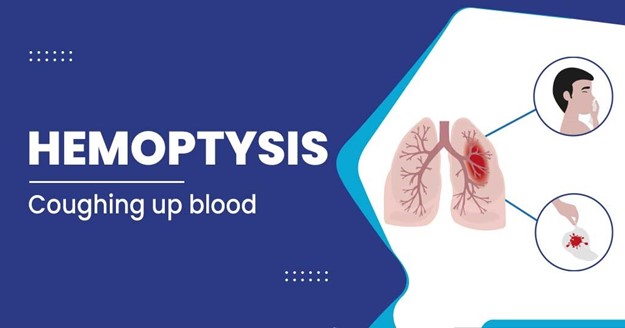A nurse is caring for a client who develops a sudden onset of dyspnea. Which of the following findings should the nurse expect if the client has a pulmonary embolus?
Expiratory rhonchi.
Petechiae over the lower extremities.
Hemoptysis.
Flattened neck veins.
The Correct Answer is C
Choice A rationale:
Expiratory rhonchi are typically associated with conditions such as chronic bronchitis or asthma but are not specific to pulmonary embolism.
Choice B rationale:
Petechiae over the lower extremities is not a characteristic finding in pulmonary embolism. Petechiae are tiny red or purple spots that appear due to bleeding under the skin and may be associated with other conditions like thrombocytopenia.
Choice C rationale:

The correct choice. Hemoptysis, which refers to coughing up blood, is a concerning finding in pulmonary embolism. It occurs due to the obstruction of blood flow in the pulmonary vasculature, leading to blood leaking into the lungs.
Choice D rationale:
Flattened neck veins are more likely to be observed in conditions associated with decreased venous return to the heart, such as hypovolemia or cardiac tamponade, and are not directly related to pulmonary embolism.
Nursing Test Bank
Naxlex Comprehensive Predictor Exams
Related Questions
Correct Answer is B
Explanation
Let's break down the calculation:
Given:
- Patient weight: 154 lbs
- Enoxaparin dosage: 0.75 mg/kg
- Available enoxaparin: 60 mg/0.6 mL
Step 1: Convert pounds to kilograms:
- 1 lb is approximately 0.4536 kg
- So, 154 lbs = 154 * 0.4536 kg/lb = 69.85 kg (approximately 70 kg)
Step 2: Calculate the total dose of enoxaparin:
- Desired dose = 0.75 mg/kg * 70 kg = 52.5 mg
Step 3: Determine the volume to administer:
- We have enoxaparin 60 mg/0.6 mL
- To find the volume for 52.5 mg:
- (52.5 mg / 60 mg) * 0.6 mL = 0.525 mL
- Rounded to the nearest tenth, this is 0.5mL.
Therefore, the nurse should administer 0.5mL of enoxaparin
Correct Answer is ["A","B","D"]
Explanation
Choice A rationale:
The nurse should administer oxygen to the client experiencing a sickle cell crisis. Sickle cell crisis can cause vaso-occlusion, leading to tissue hypoxia and pain. Administering oxygen helps to improve tissue oxygenation and relieve symptoms.
Choice B rationale:
Administering opioids is appropriate for managing the severe pain associated with a sickle cell crisis. Opioids are effective analgesics that can help alleviate the acute pain experienced by the client.
Choice C rationale:
Administering whole blood is not typically indicated for a sickle cell crisis. Whole blood transfusion is reserved for specific indications, such as severe anemia or acute blood loss, but it is not a standard treatment for sickle cell crisis pain.
Choice D rationale:
Elevating the head of the bed to 30° can improve oxygenation and reduce the workload on the respiratory system, which is beneficial for clients experiencing a sickle cell crisis. It helps to optimize lung expansion and alleviate hypoxia.
Choice E rationale:
Keeping the client NPO (nothing by mouth) is not necessary in a sickle cell crisis. There is no indication that the client cannot tolerate oral intake, so allowing them to eat and drink as usual is appropriate.
Whether you are a student looking to ace your exams or a practicing nurse seeking to enhance your expertise , our nursing education contents will empower you with the confidence and competence to make a difference in the lives of patients and become a respected leader in the healthcare field.
Visit Naxlex, invest in your future and unlock endless possibilities with our unparalleled nursing education contents today
Report Wrong Answer on the Current Question
Do you disagree with the answer? If yes, what is your expected answer? Explain.
Kindly be descriptive with the issue you are facing.
